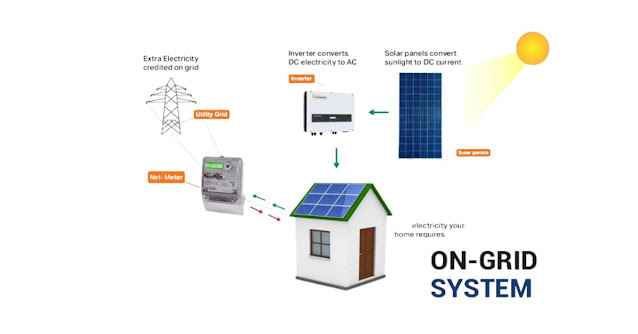What is Solar On-Grid System?
With the rapid advancement of technology in the field of solar energy, more and more people have started installing solar energy systems. Among the many different types of systems installed around the world, on-grid solar power systems are the most chosen.
What is Solar On-Grid System?
A solar on grid system is a solar energy production
system where it is connected to the utility grid. The electricity generated by
the system is sent to the grid from where it is used to power various
appliances. Its installation is also hassle-free and easy to maintain.
How does
an on-grid solar power system work?
The arrangement of solar modules absorbs sunlight on them
and converts them into electricity. The current generated here is direct
current (DC). The solar inverter then converts the DC into alternating current
(AC), thus powering electrical appliances. This electricity is then sent to the
grid where it is supplied for daily use. An important feature is a net meter.
It is a device that records the energy supplied to the grid and the energy consumed.
At the end of each month, the balance is recorded and a bill is provided to the
consumer.
Benefits
of On-Grid Solar
1. Zero electricity bill – Although the solar power system
is connected to the grid, the consumer only has to pay for the excess electricity
consumed. The bill generated on a monthly basis determines whether the consumer
has to make a payment or not. However, at the same time, if the consumer uses
less power, the excess power is fed back into the grid.
2. Easy maintenance – On-grid solar power systems have
minimal components along with simple installation. Removing the batteries makes
maintenance very easy.
3. Passive Income Generation – With the connection to the
grid, the consumer can charge for the excess electricity they generate. This
not only cuts down on your electricity bills but also provides cost benefits
for generating additional electricity.


.jpg)
Comments
Post a Comment